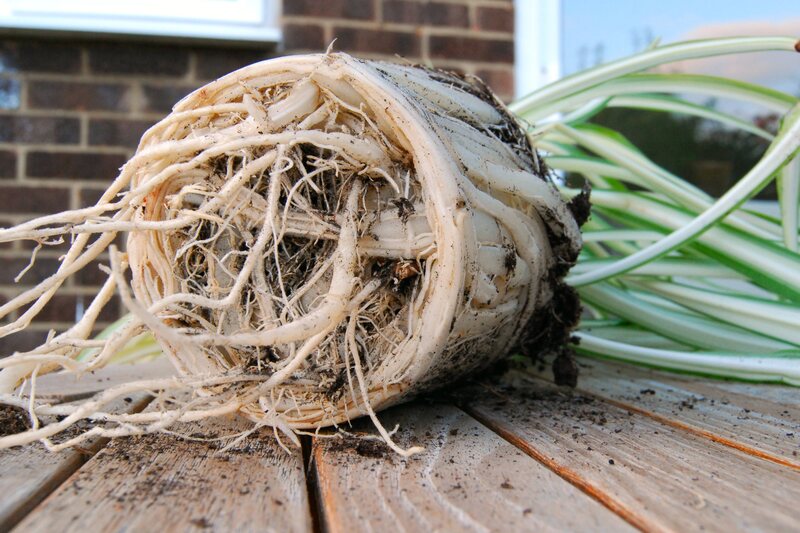Discovering the Beauty of Evergreen Climbers for Shady Spots
Posted on 24/05/2025

Discovering the Beauty of Evergreen Climbers for Shady Spots
Gardening enthusiasts are often on the lookout for versatile plants that can thrive in less-than-ideal conditions. One such challenging environment includes shady spots. Enter the world of evergreen climbers--an excellent choice for adding vertical interest and lush greenery. This guide will explore the allure of these persistent perennials and how best to incorporate them into your shaded garden landscapes.
The Charm of Evergreen Climbers
Unlike their deciduous counterparts, evergreen climbers retain their leaves throughout the year, providing year-round interest and transforming dim corners into lush sanctuaries. These versatile plants are not only visually appealing but also practical solutions for shade-covered areas where other plants often struggle.
Why Choose Evergreen Climbers?
Before diving into specific plant recommendations, it's useful to highlight the benefits of including evergreen climbers in your garden:
- Year-Round Interest: They maintain greenery through all seasons, ensuring your garden stays vibrant.
- Low Maintenance: Many varieties are drought-tolerant and pest-resistant.
- Strategic Coverage: They can quickly cover unsightly walls and fences, adding a touch of natural beauty.
- Versatility: Suitable for various garden styles and settings, from modern to cottage.
Top Evergreen Climbers for Shady Spaces
Now that we've covered the benefits, let's dive into some top choices that stand out for their stunning appearance and ability to flourish even in the dimmest of places.
1. Hedera helix (Common Ivy)
Commonly known as English Ivy, this robust evergreen climber is revered for its adaptability and hardiness. Ivy can tolerate deep shade and provides excellent coverage thanks to its ability to cling onto a variety of surfaces.
- Variety: Various cultivars with variegated leaves offer diverse aesthetic choices.
- Benefits: Acts as a natural insulator when grown on walls, reducing energy costs.
- Care: Requires occasional pruning to keep growth in check.
2. Trachelospermum jasminoides (Star Jasmine)
Often seen adorning pergolas and trellises in shaded areas, Star Jasmine is cherished for its fragrant, starry blooms and glossy leaves that persist throughout the year.
- Blooms: White, jasmine-like flowers appear in late spring and summer.
- Aroma: Sweet fragrance adds sensory appeal to the garden.
- Growth: Forms a dense cover, perfect for privacy screens.
3. Euonymus fortunei (Wintercreeper)
Named for its vigor and hardiness, Wintercreeper is a versatile climber popular in shady settings. Its evergreen leaves come in various shades of green and gold, depending on the cultivar.
- Adaptability: Can be used as a ground cover or left to climb structures.
- Pruning: Regular trimming helps maintain its shape and encourages bushy growth.
- Use: Ideal for adding color and life to otherwise dull garden areas.
4. Hydrangea anomala subsp. petiolaris (Climbing Hydrangea)
Known for its large, lace-cap blooms, the Climbing Hydrangea is another great choice for shady locations. This climber brings both beauty and texture.
- Blooms: Creamy white flowers grace the scene in early summer.
- Bark: Features appealing, peeling bark that adds interest in winter.
- Support: Needs a strong fence or wall to support its weight.
Caring for Your Evergreen Climbers
Although many evergreen climbers are low-maintenance, a little care goes a long way in ensuring these plants remain healthy and vibrant in your garden.
Planting Tips
Consider these key points when introducing evergreen climbers to shady spots:
- **Location**: While they're tolerant of shade, place them where they will receive some indirect light.
- Support Structures: Install trellises or other supports before planting to minimize root disturbances.
- Soil Preparation: Amend the soil with organic matter to improve drainage and nutrient retention.
Maintenance and Pruning
Over time, evergreens can become overgrown:
- Prune back during the dormant season to control size and shape.
- Fertilize sparingly in early spring to encourage new growth.
- Monitor for pests, although they are usually resilient to most issues.
Watering Needs
Different species will have varied watering requirements:
- Initial establishment may require more frequent watering.
- Once established, many climbers are relatively drought-tolerant.
- Check the soil moisture level regularly, especially during dry spells.
Incorporating Evergreen Climbers into Design
_Evergreen climbers_ do more than just cover up bare walls; they inspire creativity and add dimensionality to garden spaces.
Vertical Gardens
Use evergreen climbers to create stunning vertical gardens by training them along sturdy frameworks. This not only beautifies otherwise boring vertical spaces but also acts as a habitat for beneficial insects.
Biodiversity
The rich canopy of leaves from climbers attracts pollinators and protects native wildlife. Consider integrating birdhouses or insect hotels into these climber-covered sections.
Seasonal Interest
Combine different varieties of evergreen climbers with varied bloom times to maintain interest year-round. Pair white-bloomers like Jasmine with bold green-leafed ivies for contrast.
Conclusion
Incorporating evergreen climbers into shaded spots is a rewarding endeavor that brings depth, texture, and life to your garden all year round. Their varied forms, beautiful foliage, and potential as a natural privacy shield make them indispensable tools in the gardener's arsenal. Now that you're equipped with essential knowledge, it's time to start planning your green oasis, transforming those shady corners into lush expanses of beauty.
Explore the plethora of evergreen plants available and discover which climbers will best enhance your garden's unique character, ensuring a captivating display in even the shadiest of spots.


